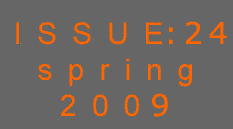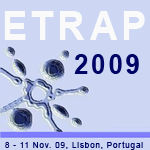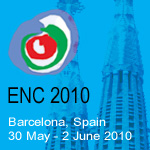PIME 2009
The PIME 2009 conference was held in Scotland’s capital city of Edinburgh on the 15th to 18th of February 2009. The conference on Public Information Materials Exchange is an annual event that is organised for communicators in the nuclear industry. This year’s conference was attended by over 160 delegates from all over the world and the main topics were public acceptance, communication on nuclear waste and transport and crisis communications. The conference is a great opportunity to network, share knowledge and develop new strategies on issues common to all those working in the nuclear industry.
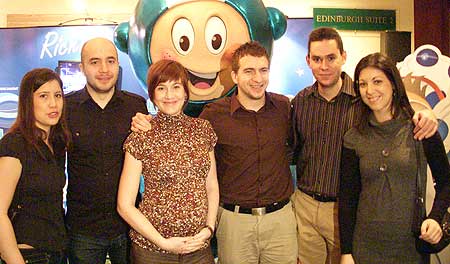
The conference began on Sunday evening with a welcome reception at the Grand Sheraton Hotel where the five nominees for the PIME Award for Communications Excellence were campaigning for votes. This year’s nominees were EDF, the Belgian Nuclear Forum, British Energy, Nuclearelectrica and Urenco.
EDF’s Women of Cattenom NPP campaign used internal and external communications to promote the important contribution that women make to the success of the plant and the wider community through a glamorous photo shoot at locations on the plant. The Belgian Nuclear Forum launched a pro-nuclear advertising campaign in Belgium through the mediums of TV, internet and printed media with the aim of encouraging discussion on nuclear energy and presenting the facts and advantages. British Energy’s campaign focused around forming a strategic partnership between British Energy’s Sizewell B NPP and a local school to promote the opportunities for young people in the nuclear industry. Nuclearelectrica’s “Welcome a tree in your family” campaign involved an army of children planting trees and encouraging them to protect and promote the environment and spread the word to others. Finally Urenco’s Richie Enrichment campaign involved science workshops which promote not only nuclear energy but science in general using a number of supporting materials ranging from web based presentations to audio visual teaching aids. Over 6000 students have successfully completed the workshops in the UK, Netherlands, and the USA and these workshops will soon be launched in Germany.
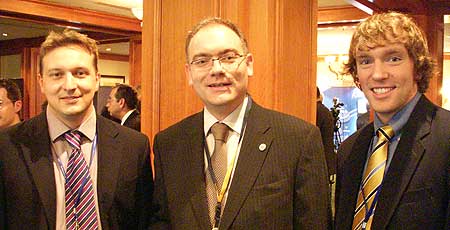
During the evening each nominee was available to answer questions and provide promotional material on their respective campaigns. The star of the evening was Richie Enrichment who made a live appearance and invited delegates to hear more about the campaign and its success by his three glamorous assistants. Delegates could also have their picture taken with the man himself and receive exclusive Richie Enrichment merchandise that I am sure delegates will pass onto their children or even keep themselves.
The conference began on Monday morning with an opening address by Santiago San Antonio, Secretary General of the ENS and Jim Murphy UK Government Minster for Scotland. Mr Murphy commented on the advantages of nuclear power and accused the Scottish National Party (SNP) of having no good reason for banning nuclear power and pointing out that Scotland would loose out on the billions of pounds in investment and employment opportunities that nuclear power presents. Scotland currently has two nuclear power stations both expected to shut down in 15 years. The Scottish Government has made it clear that it will not allow any more new nuclear power stations and plans to rely on a mix of renewable and clean fossil fuel power stations for Scotland’s future energy needs. Mr Murphy’s appearance at the conference was reported by both the local newspapers and TV stations. His comments drew strong opposition from Alex Salmond, Scotland’s First Minister, who described nuclear power as unnecessary for Scotland. Mr Murphy’s address supporting nuclear power was highlighted as an “attack” on the Scottish governments nuclear policy by the media, which shows that nuclear power is still an issue that divides public opinion and emphasises the importance of the PIME conference.
Monday morning continued with a discussion on increasing public acceptance. The results from the discussion showed that the advantages of nuclear power were gaining public support especially amongst men and the older generation. Support generally increases as age and social class increase and that expanding nuclear energy is seen as positive. Scientists and NGO’s are seen as the most trustworthy figures in the nuclear sector and the biggest concern is not the threat of terrorism or radiation but of what to do with nuclear waste. The challenge now for the industry is to increase support among women and the younger generation by not only highlighting the advantages of nuclear power but by building trust and addressing concerns over waste disposal and moving away from a culture of secrecy to a culture of transparency. Saatchi and Saatchi gave an interesting presentation on how advertising can be used to increase public support. Marc Michils, CEO, suggested that the industry needed to talk to and respect all stakeholders and get them involved as emotion leads to action. He highlighted the use of the recent T Mobile advert, showing people dancing in a train station and sharing the experience via their mobile phones. Whilst I cannot see the public dancing round a nuclear power station, I would agree that involving the public would lead to greater support.
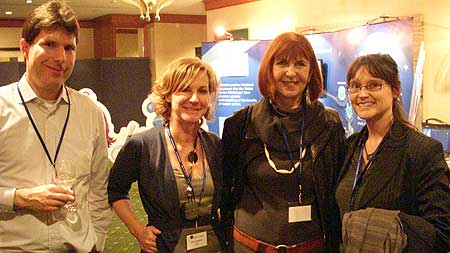
After lunch the Nuclear Industry in Britain was the topic for debate. The conference was told that the first new nuclear power station to be built was expected to be completed in 2018 and that barriers such as costs and public opinion would need to be addressed in order to ensure nuclear power was accepted as an important part of Britain’s future energy mix.
At this year’s PIME conference an innovative interactive breakout session was included. This allowed delegates to put forward ideas on the topics to be discussed and then the remaining delegates could choose which discussion to participate in. Topics included young people and women in the nuclear industry, public acceptance, online debates, finding the right balance between openness and security and how to build trust after a serious incident. The first session I attended was how to address young people and women and the main conclusions were that different genders should not receive different messages on nuclear energy and that better education is needed in schools not just on nuclear energy but the entire energy mix. Teachers need to be given more support from the nuclear industry itself such as the way Urenco uses Richie Enrichment in local schools. It was also recognised that similar initiatives need to be carried out when students are looking for jobs. Companies within the nuclear industry needed to promote the vast number of job opportunities that exist ranging from science and engineering to the vast choice of commercial opportunities as well. The second discussion I participated in was a very interesting debate on balancing openness and security within the industry. It was clear that since the 9/11 terrorist attacks security had increased however the industry needs to become more transparent in order to gain public support and acceptance. It was suggested that new nuclear sites are designed and built with this in mind allowing for public viewing areas and greater local involvement. I think these interactive sessions were a great success providing delegates with the opportunity to actively participate in the conference and gain a greater understanding as well as the opportunity to meet other delegates. I hope this idea will be implemented at more conferences in the future.
Monday evening concluded with the PIME 2009 gala dinner, sponsored by the NIA, which was held at the Signet Library in the heart of Edinburgh’s old town. Delegates enjoyed a memorable evening in the 19th Century surroundings with a three course dinner, traditional Scottish Ceilidh dancing and a live band.
During Tuesday morning the sessions covered the revised INES scale and then an open and honest account on how different crisis were managed. The first was from the incident at the NPP of Krosko where there was a loss of coolant from the primary cooling system; the second was the lessons learned by EDF at Tricastin and finally the IRE incident in Fleurus, Belgium from the Federal Agency for Nuclear Control (FANC). The morning session highlighted that the nuclear industry is becoming more open, learning from previous mistakes and continually trying to improve. It was commented that the nuclear industry needs to use websites and new technologies when it comes to communicating during a crisis and that this will help the industry become more transparent and honest.
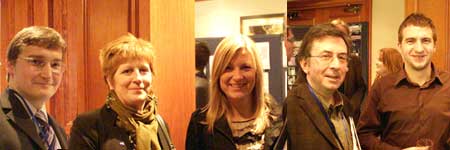
During Tuesday afternoon, three different workshops were held. I attended the workshop on waste management as it seems that this is an important issue when it comes to public support for nuclear power. The workshop discussed the current waste management options in Sweden, Finland and France. Whilst there are options for storing nuclear waste, support is greatest only at the local level and more is needed to be done to ensure greater public support not just at national level but internationally as well. This can be achieved by informing the public of the waste management options and their advantages not only to the local stakeholders but to all members of society.
The closing session of the conference was used to present the PIME Award 2009 for Communication Excellence. The standard this year was very high with a wide variety of campaigns and techniques used. This year the delegates voted for the award to go to the Belgian Nuclear Forum. This was a big vote for the campaign which only began in February and let’s hopes that the campaign is as successful in Belgium as it was at PIME 2009 in promoting the advantages of nuclear power and increasing public support.
This year’s technical tour was hosted by British Energy with a tour around the Torness Nuclear Power Station. Commissioned in 1988 it is located about 30 miles outside of Edinburgh and the power station consists of two advanced gas cooled reactors capable of supplying 1.5 million homes. The tour gave delegates the chance to see the turbine hall, the reactor hall and control room. What impressed me most were the very high safety standards at Torness and that British Energy is continually improving its internal procedures as well as its active involvement with the local community. Thank you to British Energy for hosting a very informative and enjoyable tour.
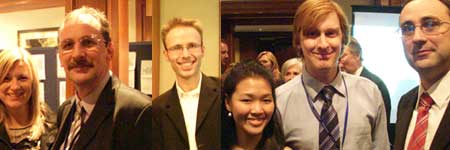
This was my first time attending the PIME conference and it seems to me that ever since the Chernobyl incident, which is still an important factor in the public acceptance of nuclear power, the industry has been very successful in gaining public support in the local areas around nuclear power stations or nuclear facilities. However the challenge for the future is to increase public support through effective communication to all stakeholders not only at a national level but internationally as well. Greater public support will provide the nuclear power industry with the confidence it needs in order to grow and develop into being an important energy supply for future generations. Effective communication and showing a culture of openness and honesty will help achieve this.
On behalf of myself and all the PIME 2009 delegates I would like to thank Urenco for there support of the Young Generation at PIME 2009 and ENS for organising a very successful conference.
Michael Bryant
mkpb@urenco.com

